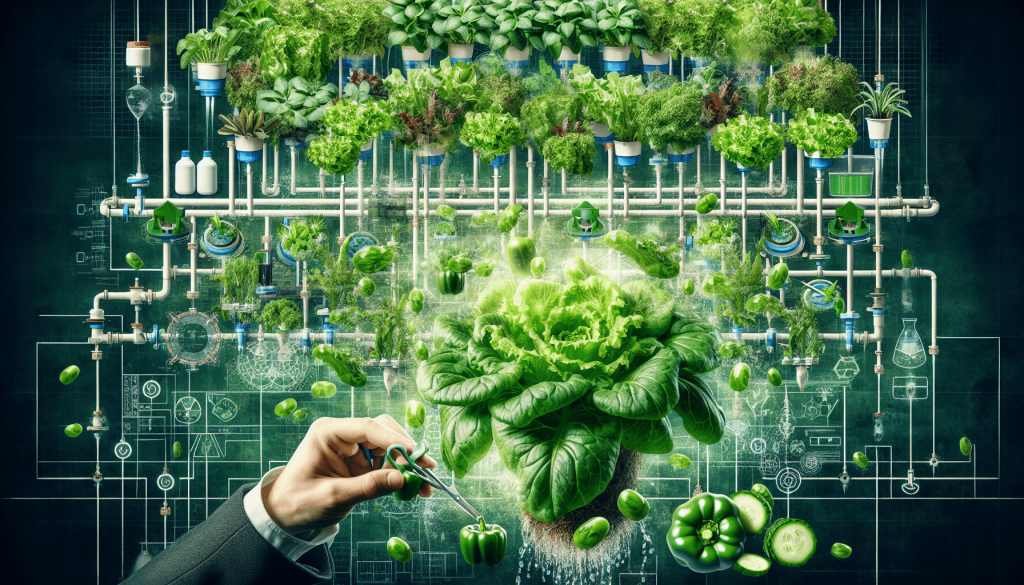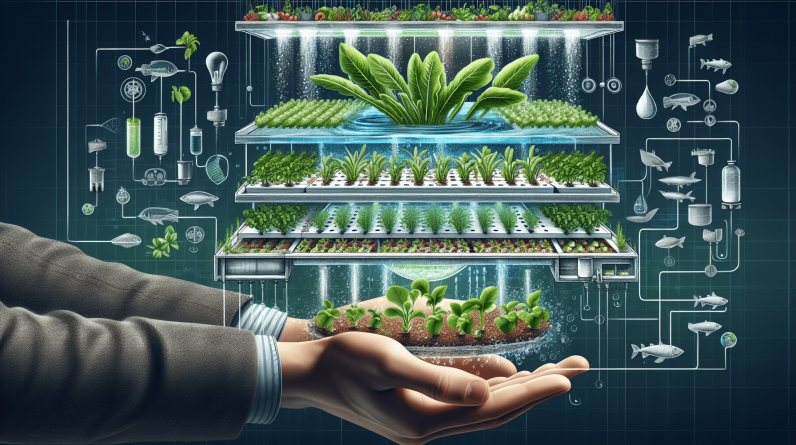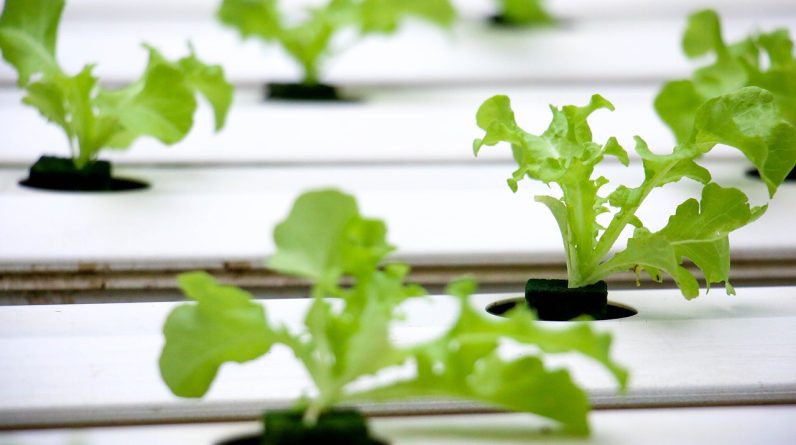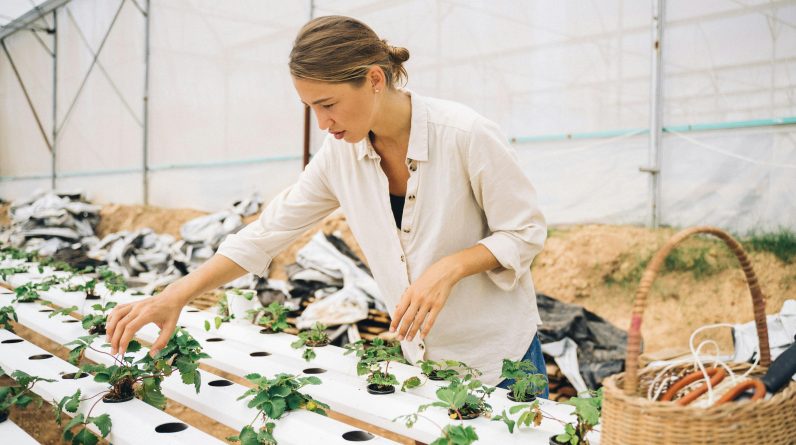
Are you curious about the world of hydroponic farming and the vast array of systems that exist? In this article, we’ll take a friendly journey into exploring the different types of hydroponic systems. From the simplicity of a Wick System to the innovation of an Aeroponic System, we’ll delve into the details of each, providing you with a brief overview of their workings and benefits. Get ready to discover the fascinating world of hydroponics and find inspiration for your own gardening adventures!
Nutrient Film Technique (NFT)
Definition
The Nutrient Film Technique (NFT) is a popular hydroponic system that allows plants to grow in a thin film of nutrient-rich water. In this system, a shallow tray or channel is set at a slight angle, allowing a constant flow of nutrient solution to trickle over the roots of the plants. The excess solution then drains back into a reservoir to be recirculated.
How it Works
In NFT, plants are placed in plastic pots or troughs with holes in the bottom to expose their roots to the nutrient solution. A pump is used to continuously circulate the solution from a reservoir to the top end of the channel, allowing it to flow over the roots and back into the reservoir. As the nutrient solution passes through the roots, it provides the plants with the necessary oxygen, nutrients, and water, promoting healthy growth.
Advantages
One of the significant advantages of the Nutrient Film Technique is water conservation. Since the system recirculates the nutrient solution, it requires significantly less water compared to conventional soil-based farming. Additionally, the continuous flow of nutrient solution allows for increased oxygenation and a constant supply of nutrients, maximizing plant growth and productivity. NFT systems are also relatively simple to set up and maintain, making them suitable for both commercial and home-based hydroponic gardening.
Disadvantages
Despite its many advantages, the Nutrient Film Technique does have some limitations. It is essential to closely monitor the flow rate of the nutrient solution to ensure it remains at an optimal level. If the flow rate is too high, it can lead to waterlogging and oxygen deprivation, resulting in root rot. Additionally, NFT systems are more prone to power outages or pump failures, which can quickly lead to plant stress or death if not addressed promptly. The shallow film of nutrient solution also makes plants more vulnerable to temperature fluctuations, requiring careful climate control and insulation.
Deep Water Culture (DWC)
Definition
Deep Water Culture (DWC) is a hydroponic system in which plants are suspended in a nutrient-rich solution, allowing their roots to grow directly into the water. This system is often referred to as the “raft system” due to the use of floating boards or rafts to support the plants.
How it Works
In DWC, plants are typically grown in net pots filled with a growing medium such as clay pellets, vermiculite, or rockwool. The net pots are placed on a floating raft that sits on top of the nutrient solution. An air pump is used to continuously aerate the solution, ensuring sufficient oxygenation for the roots. As the plants grow, their roots extend into the oxygen-rich water, absorbing the necessary nutrients and water for growth.
Advantages
One of the main advantages of Deep Water Culture is its simplicity and low cost. The system is relatively easy to set up and maintain, making it a popular choice for beginners in hydroponic gardening. DWC also provides excellent oxygenation to the plants’ roots, promoting rapid growth and higher yields. Additionally, the water in the system provides thermal stability, helping to regulate temperature fluctuations and prevent stress on the plants.
Disadvantages
Despite its simplicity, Deep Water Culture does have a few drawbacks. The system requires a constant supply of electricity to power the air pump for proper aeration. Without this, the lack of oxygen in the solution can quickly suffocate the roots, leading to plant wilting or death. Additionally, DWC systems are not suitable for all plant varieties, as some plants may struggle with the constant exposure of their roots to water. Careful monitoring of nutrient levels and pH is also necessary to prevent nutrient imbalances or pH fluctuations that could harm the plants.
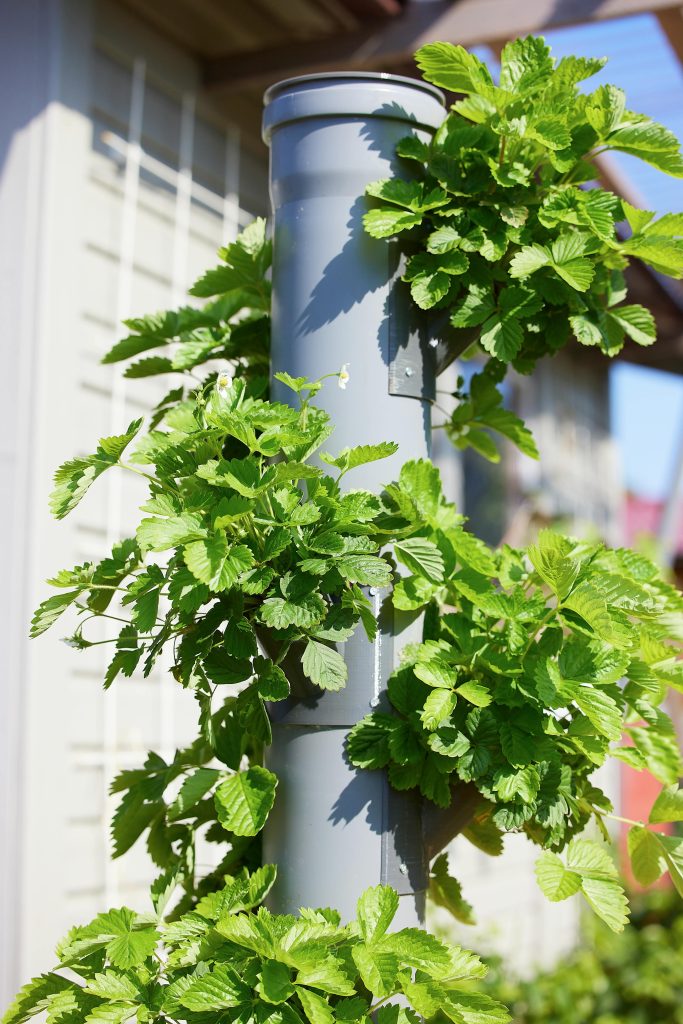
Ebb and Flow (Flood and Drain)
Definition
Ebb and Flow, also known as Flood and Drain, is a hydroponic system that involves periodically flooding the plant roots with a nutrient solution and then draining it away. This cyclic process mimics the natural ebb and flow of tides, hence the name.
How it Works
In an Ebb and Flow system, plants are typically grown in containers or flood tables filled with a growing medium such as rockwool or coconut coir. The containers are connected to a reservoir that holds the nutrient solution. A pump is used to flood the containers with the solution, allowing the roots to absorb the necessary nutrients. After a set period, the pump is switched off, and any excess solution drains back into the reservoir by gravity. This ebb and flow cycle is repeated several times a day, ensuring adequate nutrient absorption while preventing waterlogging.
Advantages
Ebb and Flow systems offer several advantages for hydroponic gardening. The periodic flooding and draining of the system promote excellent oxygenation of the roots, preventing the risk of oxygen deprivation and root diseases like rot. The flexible nature of this system allows for customization based on the specific water requirements of different plant species. Ebb and Flow setups are also relatively simple to assemble and operate, making them suitable for beginners and commercial growers alike.
Disadvantages
While Ebb and Flow systems have many benefits, they do have some limitations. The reliance on a pump for flooding and draining makes the system more prone to technical failures and power outages. If the pump stops working, the plants may be left without water or nutrients, leading to potential stress or death. Additionally, the continuous flooding and draining can cause fluctuations in nutrient levels within the system, requiring careful monitoring and adjustment. The use of a growing medium also means that periodic replacement or cleaning may be necessary to prevent nutrient buildup and root problems.
Drip System
Definition
The Drip System, also known as the drip irrigation system, is a widely used hydroponic setup that delivers a regulated flow of nutrient solution directly to the base of the plants. This system operates by utilizing a network of tubes or dripper stakes to deliver a slow and controlled drip of the solution to the roots.
How it Works
To implement the Drip System, plants are typically grown in pots or containers filled with a growing medium. The nutrient solution, stored in a reservoir, is pumped through a series of tubes or dripper stakes. The drippers release small droplets of the solution directly onto the growing medium or root zone of the plants. The excess solution drains through the medium and is collected for recirculation or disposal. This method ensures that the plants receive a continuous supply of nutrients while maintaining appropriate moisture levels for optimal growth.
Advantages
The Drip System is known for its efficiency and versatility. It allows for precise control of nutrient deliver, promoting optimal nutrient uptake by the plants. The slow and controlled nature of the drippers also minimizes water wastage. The use of a growing medium provides support for the plants and allows for better root aeration. The Drip System is relatively easy to automate and allows for scalability, making it suitable for both small-scale and large-scale hydroponic farming.
Disadvantages
Despite its advantages, the Drip System has some drawbacks. The use of tubes and drippers increases the risk of clogging, which can impact the uniformity of nutrient distribution. Regular monitoring and maintenance are necessary to prevent blockages and ensure consistent nutrient flow. Drip systems are also more susceptible to leaks, which can lead to water and nutrient wastage if not addressed promptly. Careful attention to the flow rate and adjustment to accommodate different plant requirements is essential to prevent overwatering or underwatering.
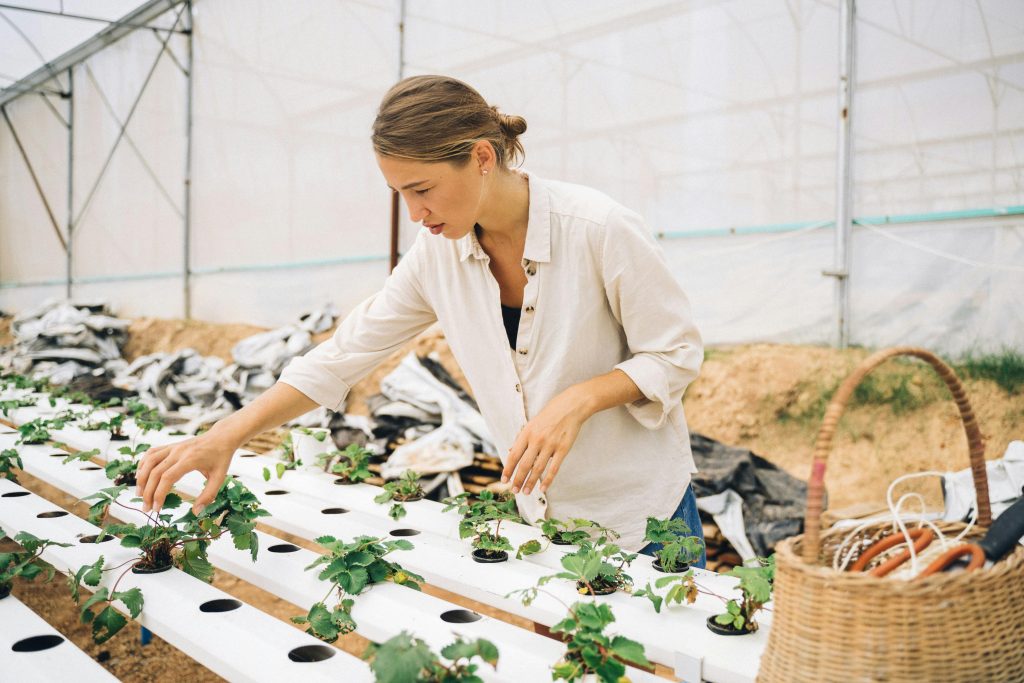
Aeroponics
Definition
Aeroponics is a high-tech hydroponic system that involves suspending plant roots in the air and misting them with a fine nutrient solution. Unlike other systems, Aeroponics provides the highest level of oxygenation to the roots, resulting in accelerated plant growth rates and increased nutrient absorption.
How it Works
In Aeroponics, the plants’ roots are typically supported by a vertical structure such as a tower or a misting chamber. The nutrient solution is stored in a reservoir and pumped through a system of misting nozzles or sprayers. The roots are regularly misted with the nutrient solution, which provides both the necessary nutrients and hydration. The excess solution is collected and recirculated to maintain the system’s efficiency.
Advantages
Aeroponics offers several advantages in hydroponic farming. The high level of oxygenation provided to the roots enables rapid growth rates, making it possible to achieve significantly higher yields compared to other hydroponic systems. The absence of a growing medium allows for better nutrient absorption and reduces the risk of root diseases caused by waterlogging. The efficient use of water and nutrients makes Aeroponics an environmentally-friendly choice for farming.
Disadvantages
Despite its numerous benefits, Aeroponics does have some disadvantages. The complexity of the system requires more technical knowledge and experience to set up and operate compared to other systems. The misting nozzles or sprayers are more prone to clogging, necessitating regular maintenance and cleaning. Aeroponic systems are also sensitive to power outages or pump failures, as the plants’ roots rely entirely on the misting process for water and nutrients. The absence of a growing medium also means that the roots are more vulnerable to external factors such as temperature fluctuations, requiring careful climate control.
Wick System
Definition
The Wick System is a simple and low-cost hydroponic setup that utilizes capillary action to provide water and nutrients to the plants. It involves the use of a wick or absorbent material to draw the solution from a reservoir into the root zone.
How it Works
In the Wick System, plants are typically grown in containers or pots filled with a growing medium like perlite or vermiculite. A wick, made of materials such as cotton or nylon, is inserted into the growing medium and extends into the nutrient solution. The wick acts as a conduit, drawing the solution from the reservoir into the growing medium, where the plant roots can absorb it. This self-regulating system does not require any electricity or pumps, relying solely on capillary action for nutrient delivery.
Advantages
The Wick System offers simplicity and affordability, making it accessible to beginners and those with limited resources. It requires no electricity or moving parts, reducing the risk of system failures. The passive nature of the wick system also ensures a slow and constant supply of water and nutrients, minimizing the risk of overwatering. The use of a growing medium provides support for the roots and helps maintain proper oxygenation.
Disadvantages
While the Wick System has its advantages, it also has limitations. The reliance on capillary action means that the delivery of nutrients can be slower compared to other systems, potentially affecting plant growth rates. The system is best suited for small to medium-sized plants, as larger plants may require more rapid nutrient uptake. It is important to carefully monitor the moisture levels of the growing medium to prevent it from drying out or becoming waterlogged. The absence of active circulation also means that regular monitoring of nutrient levels and pH is crucial to prevent imbalances and maintain plant health.
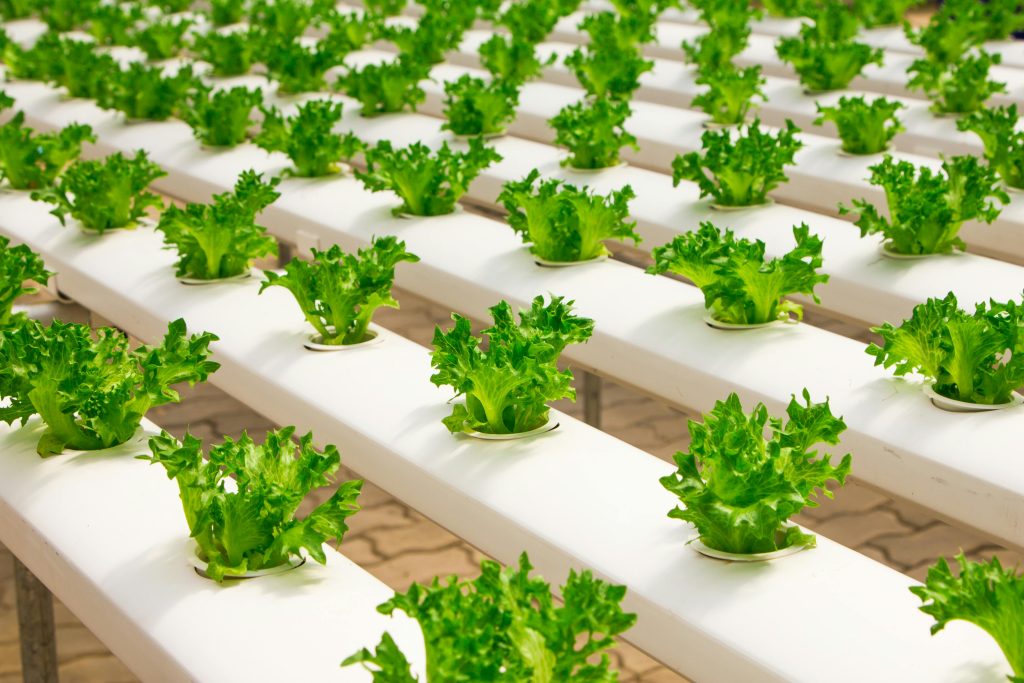
Vertical Hydroponics
Definition
Vertical Hydroponics, also known as vertical farming, is a system that maximizes space utilization by growing plants in vertically stacked layers or towers. This innovative setup allows for increased plant density and productivity, making it suitable for urban environments and limited space areas.
How it Works
In Vertical Hydroponics, plants are typically grown in vertical towers or stacked shelves. Each layer or tower consists of several growing channels or pockets, allowing for multiple plants to be grown in a compact area. Nutrient-rich water is delivered to the plants through a recirculating system, providing the necessary water and nutrients for growth. The excess solution is collected and recycled, ensuring minimal waste.
Advantages
The Vertical Hydroponics system offers several advantages, especially in urban settings with limited space. Its vertical design maximizes land usage by growing plants in three-dimensional space, significantly increasing production capacity. The controlled environment of vertical farming allows for year-round cultivation, reducing the dependence on seasonality. The close proximity of the plants in the vertical towers promotes shade regulation, which can reduce the need for pesticides and create a more favorable microclimate for plant growth. Vertical Hydroponics also allows for efficient use of resources, such as water and energy, making it a sustainable choice for urban agriculture.
Disadvantages
One of the main challenges of Vertical Hydroponics is the initial investment required for infrastructure and equipment. The setup can be more complex and costly compared to traditional hydroponic systems. Additional considerations such as lighting, air circulation, and climate control are essential to ensure optimal plant growth in vertical farming. The dense planting can also make it more challenging to monitor individual plants for signs of disease or nutrient deficiencies. Lastly, maintenance and harvest may require extra effort due to the vertical arrangement, potentially increasing labor costs.
Tower Gardens
Definition
Tower Gardens are a type of vertical hydroponic system designed for both indoor and outdoor gardening. These compact and self-contained units allow for the growth of a variety of plants while minimizing the required space and resources.
How it Works
A Tower Garden consists of multiple stacked planters or grow tubes that are filled with a growing medium and supported by a central column. Nutrient-rich water is pumped to the top of the tower and distributed evenly through the different layers using a drip system. The water gradually percolates down through the growing medium, providing hydration and nutrients to the plants’ roots. Excess water is collected and recirculated, minimizing waste.
Advantages
Tower Gardens offer several advantages for home gardening and small-scale commercial operations. Their vertical design allows for optimal space utilization, making them suitable for balconies, rooftops, and other limited spaces. The self-contained nature of Tower Gardens makes them easy to set up and maintain, requiring minimal external infrastructure. These systems provide excellent accessibility, making it easier to tend to the plants, monitor their health, and harvest fresh produce. Tower Gardens also offer energy-efficient and water-saving benefits, making them an eco-friendly option for sustainable gardening.
Disadvantages
While Tower Gardens are convenient and space-saving, they do have limitations. The compact size of the planters or grow tubes restricts the types and sizes of plants that can be grown. Taller plants or those with extensive root systems may not thrive in this system. Maintaining proper water circulation and nutrient distribution throughout the tower is essential to prevent nutrient imbalances or dehydration. Additionally, the system may require supplementary lighting in indoor settings or when growing plants in shaded areas. Careful attention to the plants’ individual needs and regular monitoring is crucial for successful growth.
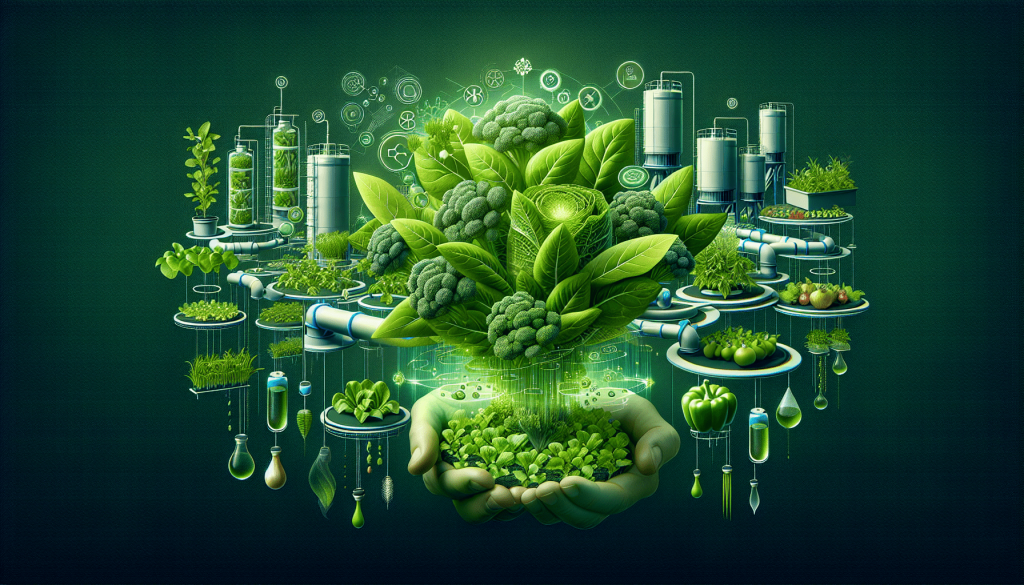
Aquaponics
Definition
Aquaponics is a symbiotic system that combines hydroponics with aquaculture, creating a self-sustaining and mutually beneficial ecosystem. This system involves the cultivation of plants in water enriched with nutrients produced by fish or other aquatic animals.
How it Works
In Aquaponics, fish are typically kept in tanks or ponds, where they produce waste containing ammonia. The nutrient-rich water from the fish tanks is then circulated to the hydroponic beds, where the plants are grown. The plants absorb the nutrients from the water, acting as a natural filtration system that cleanses the water for the fish. The purified water is then returned to the fish tanks, completing the cycle. This mutually beneficial relationship between plants and fish eliminates the need for external nutrient solutions and provides a sustainable method of cultivating both food and aquatic life.
Advantages
Aquaponics offers several advantages, both from an environmental and practical standpoint. The symbiotic nature of the system minimizes waste and water usage, making it a sustainable and resource-efficient choice. The nutrient-rich water produced by the fish eliminates the need for external fertilizers, reducing costs and environmental impact. Aquaponics also eliminates the risk of soil-borne diseases and pests, resulting in cleaner and healthier produce. The versatility of the system allows for the cultivation of a wide range of plants and aquatic species, providing an opportunity for integrated and diversified farming.
Disadvantages
While Aquaponics has numerous benefits, it also presents some challenges. Maintaining a balanced ecosystem in an Aquaponics system can be complex, requiring careful monitoring of nutrient levels, pH, and oxygenation. The health and well-being of both the plants and the fish depend on maintaining proper water quality and temperature. Any imbalance or fluctuations can quickly lead to stress or death of the organisms. The initial setup for Aquaponics can also be more involved and costly compared to other hydroponic systems, requiring knowledge and expertise in both hydroponics and aquaculture. Additionally, the reliance on living organisms means that disease or pest outbreaks can quickly spread and affect the entire system if not addressed promptly.
Fogponics
Definition
Fogponics, also referred to as fog hydroponics, is an advanced and experimental hydroponic system that uses fog to provide water and nutrients to the plants. This unique setup creates micron-sized water droplets that are suspended in the air, enveloping the roots and leaves, providing optimal hydration and nutrient absorption.
How it Works
In Fogponics, the nutrient solution is transformed into a fine mist or fog using high-pressure pumps or ultrasonic humidifiers. The fog is released into a sealed environment or chamber, ensuring that it remains near the plants and roots. The micron-sized water droplets are easily absorbed by the plant’s tissues, allowing for efficient nutrient uptake and transpiration. The excess fog condenses and is recycled back into the reservoir, minimizing waste.
Advantages
Fogponics offers several unique advantages for hydroponic farming. The fine mist or fog provides excellent hydration and nutrient delivery to all parts of the plants, including the leaves. This promotes rapid growth and allows for higher nutrient absorption compared to other systems. The elimination of direct contact with water or growing medium also reduces the risk of root diseases and pests. Additionally, the sealed environment in which the fog is contained allows for greater control over temperature, humidity, and CO2 levels, creating optimal growing conditions.
Disadvantages
Fogponics, while promising, is still an experimental system and is less widespread than traditional hydroponic setups. The complexity of the setup requires technical expertise and specialized equipment, making it less accessible to beginner hydroponic enthusiasts. Fogponics systems can be more prone to disruptions caused by power outages or technical failures, as the plants are entirely dependent on the fog for water and nutrients. The fine mist or fog can also be challenging to regulate, requiring precise adjustments to prevent overhydration or underwatering. The cost of the equipment and maintenance for fog generation and purification can also be a limiting factor for small-scale growers.
In conclusion, hydroponic farming offers a diverse range of systems and methods, each with its advantages and disadvantages. From the simplicity of the Wick System to the advanced technology of Aeroponics, there is a hydroponic system suited for every level of expertise and agricultural need. By exploring and understanding these different systems, you can choose the one that aligns with your goals, resources, and the plants you wish to grow. Whether you opt for the space-saving vertical hydroponics or the symbiotic Aquaponics, hydroponic farming provides an efficient and innovative way to cultivate plants without soil, revolutionizing traditional agriculture for a sustainable future.
